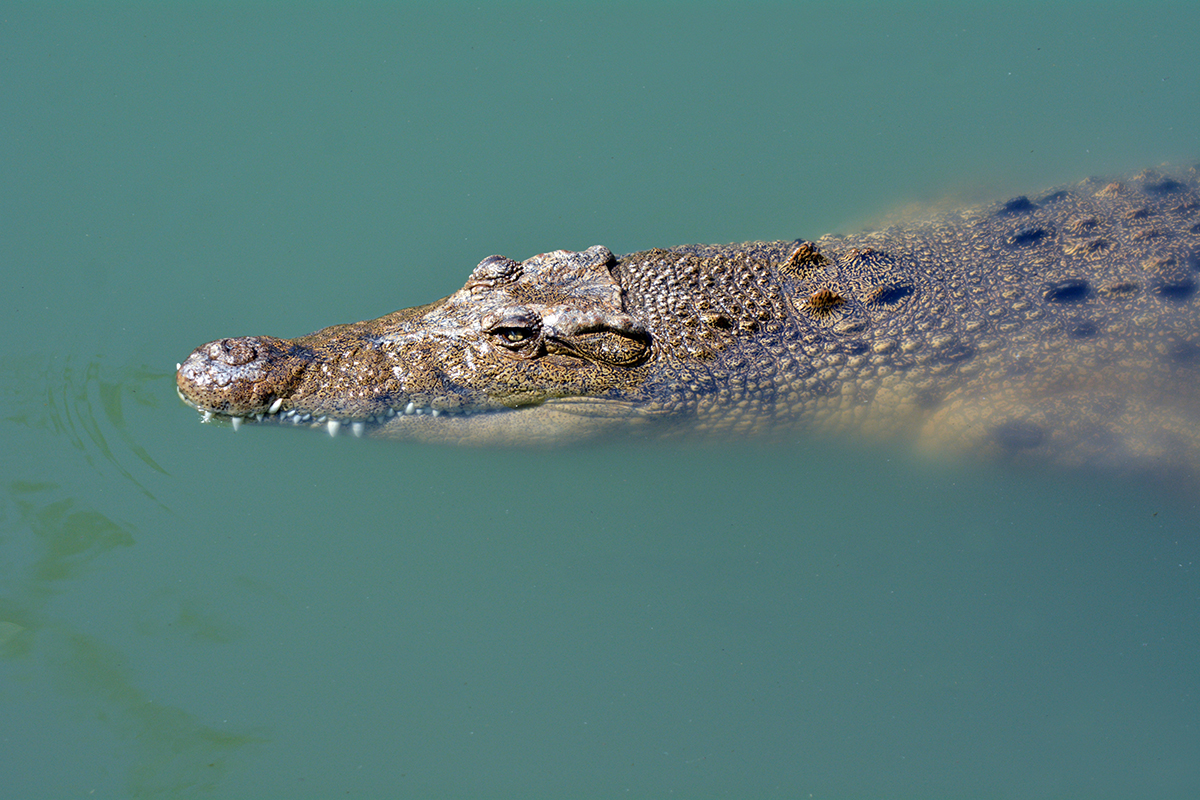Saltwater (or estuarine) crocodiles have short limbs and a heavy muscular body covered with rough scales. They grow all their lives and an adult male can grow up to 5.5 metres. Crocodiles can hold their breath underwater for more than an hour, keeping very still waiting for prey. But don’t be fooled —crocodiles can swim up to 32 kilometers per hour, powered by their long powerful tail. They can also run short distances on land as fast as 17.6 kilometers per hour and can certainly catch you! Crocodiles also store fat in their tails, so they can survive for up to two years without eating if necessary.

